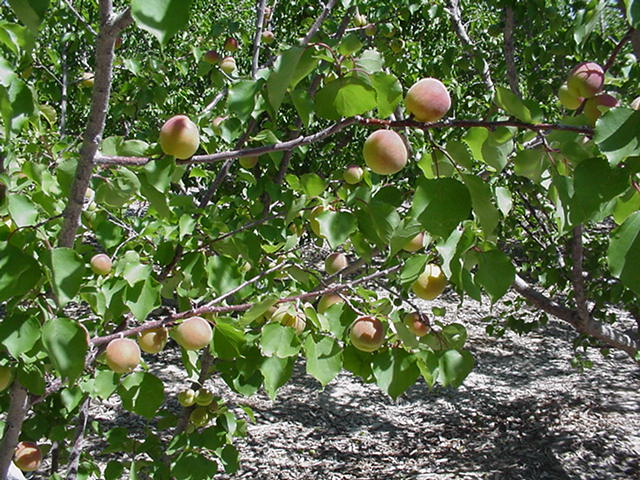Q. I have Katy and Blenheim apricots that are supposed to
be low chill and self-pollinating but they barely produced any fruit the last
two years. Three years ago both trees had a large amount of fruit. The trees
seem to be healthy and there were plenty of bees.
A. Both of these types of apricots are older varieties
and excellent producers in our climate. They are both self-pollinating and do
not require much winter chilling temperatures to produce fruit.
 |
| Fruits of Katy apricot great for drying |
You didn’t tell me if you saw
flowers or not. The presence of flowers and no fruit is a big clue as to what
may have happened. I am guessing you had lots of flowers but no fruit.
My guess is it was due to
freezing temperatures during February. Apricots will flower during the first
couple weeks of February. Last year there was a late freeze that could have
eliminated apricot fruits in parts of the Valley where cold temperatures
accumulate.
 |
| Apricot fruiting spurs |
When fruit trees are near
flowering, in flower or they have set small fruit, then these fruit
buds/flowers/small fruit will tolerate temperatures from 32 to about 30° F. Nothing
lower than this.
Too much shade from neighboring
trees can eliminate fruit production in all but the sunny locations of the
tree, usually hear the top or exposed sides.
You didn't mention pruning. If
anyone pruned these trees and removed small side shoots from branches then
there will be no fruit. Fruiting spurs are small side shoots going from
branches. Fruiting spurs are needed on apricot for fruit production.
So unless someone pruned out the
fruiting spurs or there was a late freeze this year, you should have plenty of
apricots.












